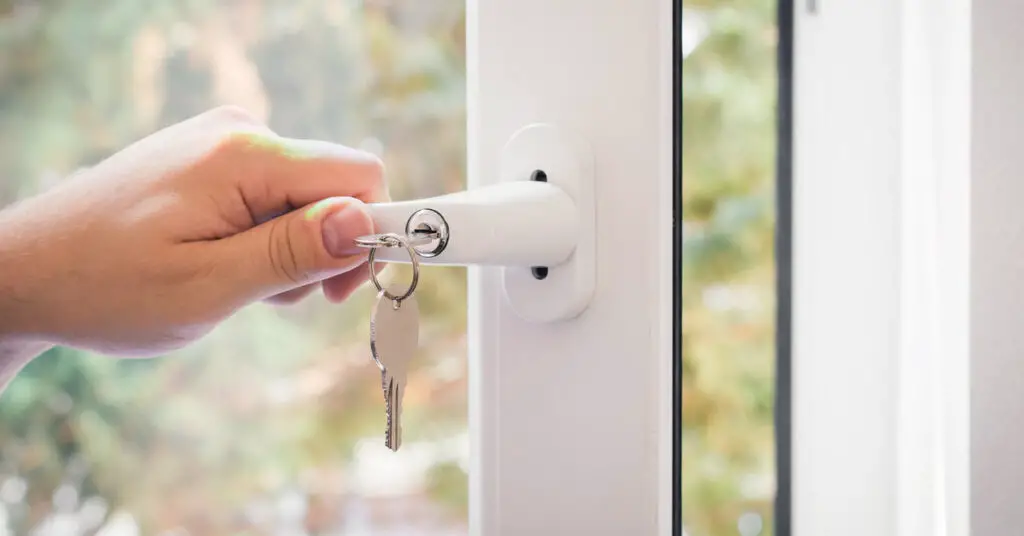Ensuring the safety of your home is paramount, and one effective measure to enhance your security is to learn how to install window security locks. These locks add a layer of protection against intruders and can provide peace of mind.
In this guide, we’ll walk you through the step-by-step process of selecting the right security locks for your windows and the tools you will need to complete the installation.
Whether you are looking to safeguard your home or simply want to bolster your existing security measures, mastering the installation of window security locks is an essential skill for any homeowner.
Assess Your Window Type
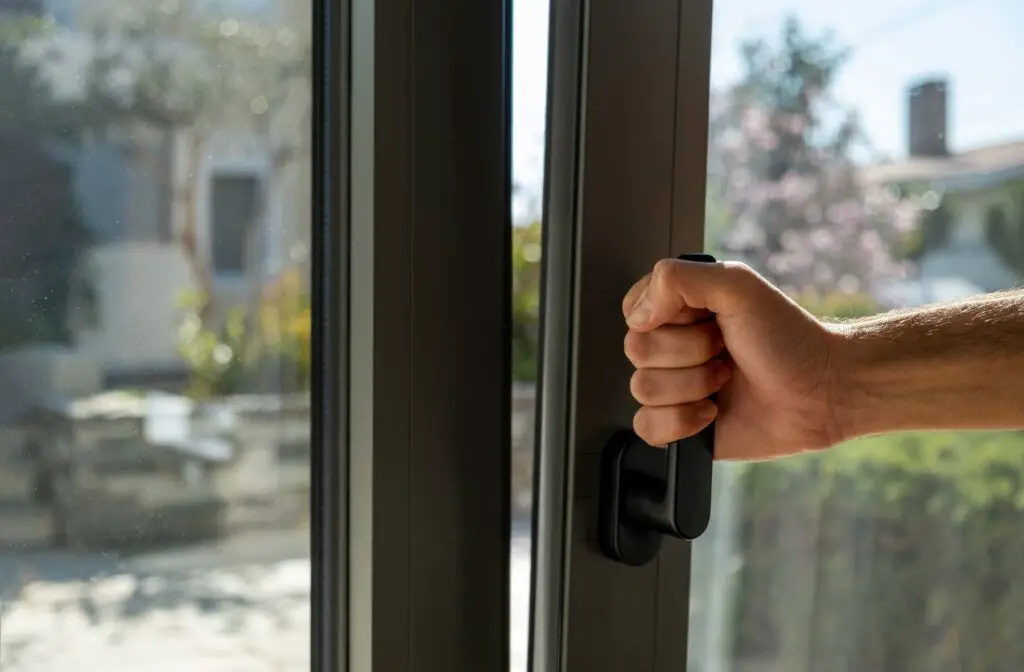
Identify Window Style
Before you can determine the type of security lock that is appropriate for your window, you’ll need to identify the style of the window you are working with. Common window styles include sliding, double-hung, casement, and awning windows.
Each type requires a different approach to security lock installation, so recognizing the specific style is crucial.
Determine the Material of the Window Frame
The material of your window frame can affect the installation process of your security locks. Common materials include wood, metal, and vinyl, each with its own set of considerations.
Wood frames may require pre-drilling for screws, metal frames might need specialized tools for secure fitting, and vinyl frames demand care to avoid cracking during the installation.
Choose the Right Lock
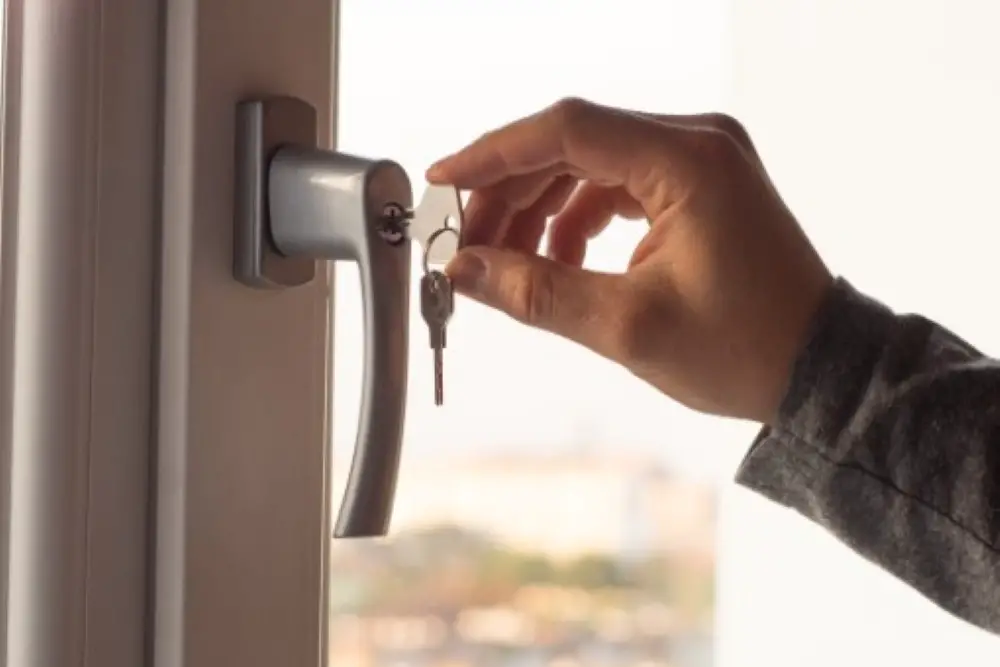
Select Lock Style Compatible with Your Window Type
When selecting the style of lock for your window, ensure compatibility with your window type to provide optimal security and ease of use. For sliding windows, consider using a pin lock or a Charley bar, which anchors the window to the frame to prevent it from being opened.
For double-hung windows, sash locks or key-operated levers can add extra security. In casement windows, a locking handle or a casement window lock may be suitable.
Lastly, awning windows might benefit from a chain lock or a keyed lock specific to the awning style.
Remember that matching the lock to the window type not only contributes to the overall security but also the aesthetic and function of the window.
Consider the Level of Security Required
Determining the level of security necessary for your windows is a pivotal aspect of choosing the right security locks. Evaluate the safety concerns unique to your area, such as the local crime rate or potential environmental hazards.
In high-risk areas, high-grade locks with reinforced materials offer stronger resistance to forced entry. For example, locks with anti-lift pins or key lockable latches provide additional layers of security for sliding windows.
For ground floor or easily accessible windows, consider locks with keyed entries that add a deterrent against unauthorized access.
On the other hand, for windows on higher floors or in low-risk environments, simple latches may suffice for security while still providing quick egress in case of an emergency. It’s also essential to comply with any fire safety regulations, ensuring that window locks do not impede escape routes.
Always balance the need for security with the practicality of daily use, ensuring that security features do not become an inconvenience for the occupants.
Gather Necessary Tools
Before you begin the installation process for window security locks, make sure to gather all the necessary tools. The right tools will ease the installation process and ensure that the locks are fitted correctly and securely. Here is a list of tools you might need:
- Measuring tape to measure the windows and ensure a proper fit for the locks.
- Drill with various bit sizes for making pilot holes or securing hardware.
- Screwdriver set including both flat-head and Phillips-head for screws that come with the lock kit.
- A lock installation kit specific to the type of security lock being installed is often provided with the purchase.
- Utility knife for any trimming that might be necessary during installation.
- Level to ensure locks are installed straight and function properly.
- Pencil or marker to mark drilling spots and screwing points.
- Safety goggles to protect your eyes from dust and debris while drilling.
- Gloves to protect your hands during the installation process.
Mark the Position for Lock Installation
Measure the Correct Spot for the Lock
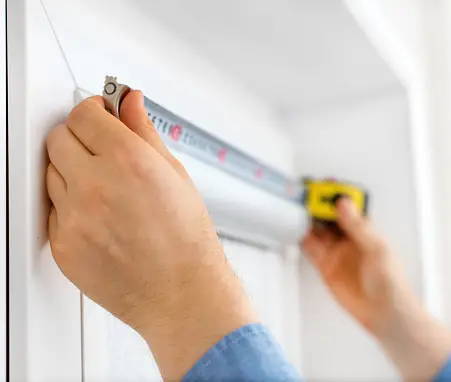
To ensure optimal security and functionality, precisely measure where the lock should be installed on the window frame. Use a measuring tape to determine the best position for the lock, keeping in mind the type of window and its method of operation.
For sliding windows, measure an appropriate distance from the edge to allow the window to open partially for ventilation while still being secure.
For sash windows, the locks should be positioned near the top of the lower sash or at the bottom of the upper sash.
Mark the Position with a Pencil or Marker
Once you have determined the exact location for your window security lock, take your pencil or marker and mark the spot. If you are installing more than one lock, use a level to make sure the locks align properly across the window.
This step is crucial as it serves as a guide for drilling or screwing in the hardware, thus preventing any misalignment issues that could affect both the security provided by the lock and the ease of opening and closing the window.
Install the Lock
Pre-Drill Holes for the Security Lock
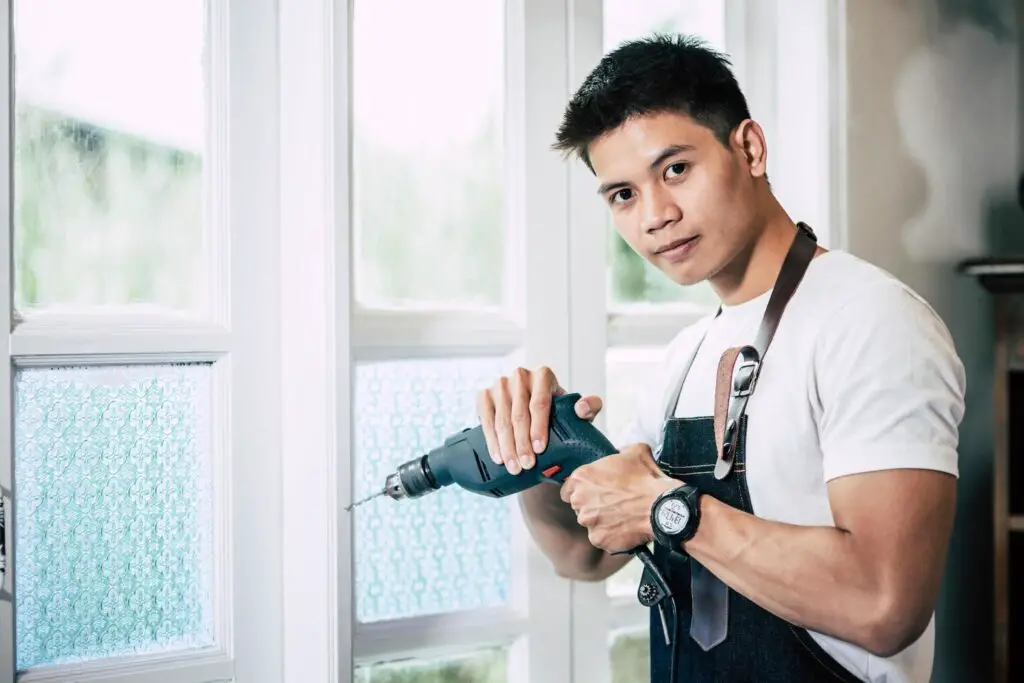
Before securing your window lock into place, it may be necessary to pre-drill holes in your window frame, especially if dealing with harder materials like metal or certain types of wood.
Select the Appropriate Drill Bit
Select a drill bit that is slightly smaller than the screws you’re using for the lock. Doing so ensures a snug fit and strong hold once the screws are inserted.
The size of the drill bit is often indicated in the lock installation instructions. If not, a general rule of thumb is to choose a drill bit that is about the same diameter as the inner core of the screw, not including the threads.
Start Drilling Holes
Align the drill with the marks you made previously on the window frame. Start by drilling slowly to establish a guide hole; once you have a shallow hole to guide the drill bit, you can gradually increase speed.
Apply a steady pressure to ensure the drill goes straight into the frame without wavering, which could compromise the hole’s integrity and the security of the lock.
Clear Any Debris
After drilling, remove any dust or shavings from the hole and surrounding area to ensure a clean work surface. This can be accomplished with a small brush or even a blast of air.
Clearing debris not only prepares the area for the actual installation but also is important for the lock to fit correctly and function smoothly.
Test the Screws
Carefully test the screw in the hole to check for fit. It should fit snugly without being overly tight; if you find resistance when screwing, do not force it, as it may mean the hole is too small. Instead, remove the screw, widen the hole with a slightly larger drill bit, and test again.
Taking the time to carefully pre-drill holes when installing window security locks can make a significant difference in the result, ensuring that your locks are secure and your windows function properly.
Screw Lock into Place Firmly
Once you’ve confirmed that the screw fits correctly, it’s time to secure the lock in place. Position the window security lock over the holes, aligning it precisely with the drilled openings.
Insert the screws through the lock’s mounting holes and into the pre-drilled holes in the window frame, and tighten them by hand with a screwdriver.
Ensure the screws are driven in firmly but not overtightened as this could strip the threads or damage the lock or window frame. The lock should be stable with no wobble or play, indicating a secure installation.
Ensure That the Lock Operates Smoothly
After the lock has been secured, it is crucial to verify its operation. Gently close the window and engage the lock by following the manufacturer’s instructions.
The locking mechanism should slide smoothly into place without any sticking or resistance. If the lock does not engage easily, unlock and inspect the alignment of the bolt and the receiving area.
Sometimes, minor adjustments need to be made to ensure that the moving parts do not bind. By testing the lock’s operation in various positions, you can confirm that it provides reliable security at all times.
Related Topics:
Test the Lock
Lock and Unlock Several Times to Ensure Functionality
After installation, repeatedly lock and unlock your new window security locks several times to confirm their proper functionality. This repetitive action is a good way to establish that the mechanism is working smoothly and consistently.
If at any point the lock feels stiff or balky, make sure to lubricate the moving parts according to the manufacturer’s recommendations.
Consistent operation is key to ensuring your windows are secure and that the locks will perform reliably when you need them most.
Check for Any Issues with the Window’s Operation
In conjunction with testing the lock, it is equally important to check the overall functionality of your window. After the security lock is installed, open and close the window several times to ensure that the presence of the lock isn’t hindering its operation.
Look out for any unusual resistance or misalignment. If the window does not open or close as it did before the lock installation, there may be an adjustment needed either in the positioning of the lock or within the window track itself to restore smooth operation.
Safety Check and Maintenance
Double-check All Screws and Hardware Periodically
Regularly inspecting the screws and hardware of your window security locks helps ensure that they remain tight and secure.
Over time, the natural use of windows can lead to loosened components, which could compromise the security of the lock. Make a habit of checking these elements every few months, and re-tighten any parts that have become loose.
Lubricate the Lock Mechanism as Needed
To maintain the smooth operation of the lock mechanism, periodic lubrication can be beneficial. Refer to the manufacturer’s guide for the recommended lubricant and apply it sparingly to the moving parts of the lock.
This can help to prevent rust, reduce wear and tear, and ensure a long-lasting, effortless locking action.
Replace Any Worn Parts or Hardware Immediately
A critical aspect of maintaining window security locks is being vigilant about the condition of each part. Inspect the components regularly for signs of wear or damage.
If any part appears worn or functions improperly, it is crucial to replace it immediately to maintain the integrity of your window’s security system.
Conclusion
Installing window security locks is an essential step towards enhancing the safety and protection of your home. Through this comprehensive guide, we’ve discussed how to assess your window type, choose the right lock, and gather the necessary tools for a successful installation.
We’ve navigated through the meticulous steps to properly install your window locks, ensuring that they are not only functional but offer the highest level of security.
Regular maintenance, including checking hardware, lubricating mechanisms, and replacing worn parts, will keep your locks in top condition for years to come.
By empowering yourself with the knowledge of how to install window security locks, you not only secure your windows against potential intruders but also gain peace of mind, knowing that your home is safeguarded.
Remember, taking proactive measures in home security is a wise investment in the protection and comfort of your living space.
FAQs
What should I do if my window frame isn’t compatible with standard security locks?
If your window frame isn’t compatible with standard security locks due to its size or material, consider seeking custom-made locks or alternative security devices designed for unique window types. Consulting with a professional locksmith or a home security expert can provide you with tailored solutions that fit your specific window configurations and security requirements.
How often should I perform maintenance checks on my window security locks?
It’s recommended to perform maintenance checks on your window security locks at least twice a year. However, if you reside in an area with high humidity or salty air, such as near the ocean, more frequent checks may be necessary to counteract the increased risk of corrosion and ensure that the mechanisms continue to function properly.
